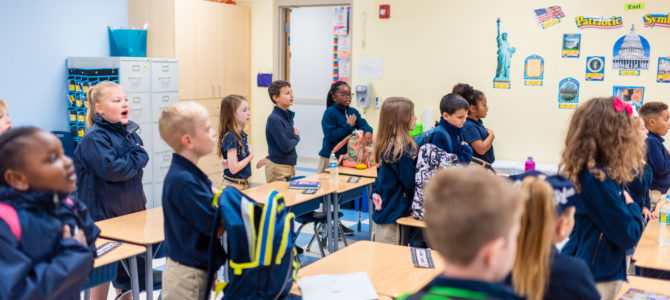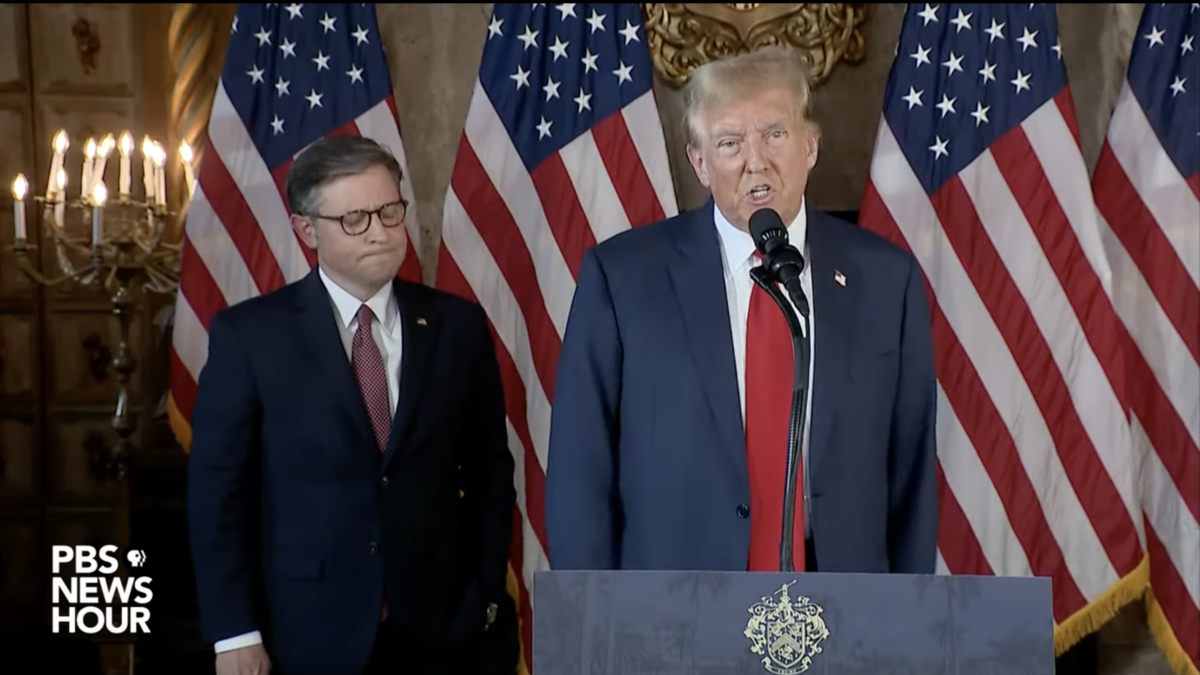Hillsdale College is a small institution with lofty values: “Goodness, Truth, and Beauty.” Now, the college is expanding its pursuit of the truth to grade schools with an American history curriculum for grades K-12, “offered for free to all who wish to learn.”
“This curriculum is a work of education,” Hillsdale College President Larry P. Arnn said. “It seeks to teach the truth of American history and to cultivate in students the knowledge and virtue necessary to live good lives as citizens.”
An abiding truth. That’s what you’ll find in Hillsdale’s free and downloadable 1776 Curriculum—the ideas, words, deeds, and events that have most significantly shaped the world into which we were born and thus form the fabric of America. Download today! https://t.co/z4tI4AZcVM pic.twitter.com/JNSVHWNk69
— Hillsdale College (@Hillsdale) July 21, 2021
The curriculum is a response to the now de-commissioned 1776 Commission, which called for an honest restoration of American history. Arnn chaired the commission and Matthew Spalding, vice president of Hillsdale’s Van Andel Graduate School of Government in Washington, D.C., served as its executive director.
Created to secure and celebrate founding principles found in the Declaration of Independence, the 1776 Commission was de-funded on President Joe Biden’s first day in office for a small note in its appendix that deemed identity politics “fundamentally incompatible with the principle of equality enshrined in the Declaration of Independence.”
Combatting critical race theory, the popularized anti-American and racist curriculum that has permeated institutions across the country, is not the purpose of Hillsdale’s latest curriculum. The 20-unit curriculum aims to strengthen civic understanding through detailed lesson plans with initial units including American history, middle school Civics courses, and high school Government and Politics courses.
Encouraging true American education is not new for Hillsdale. For decades, one of Hillsdale’s outreach programs the Barney Charter School Initiative (BCSI) has partnered with the college to advance good education. The initiative has resulted in 24 schools in 11 states, all employing Hillsdale’s well-developed K-12 liberal arts curriculum.
Kathleen O’Toole, assistant provost for K-12 education of the BCSI, noted many truths that grounded the curriculum. A few are listed below:
- That truth is objective, according to the first law of logic, the law of contradiction: that something cannot both be and not be at the same time in the same way. The first object of the human mind and the first end of education is this objective truth about the world.
- That the good is that at which all actions however misguided or distorted, aim. The good shows us how we ought to act, which we call right moral conduct.
- That individuals should be judged based on their specific actions tending toward a certain character instead of their label, group identity, sex, religion, or skin color.
- That although the United States of America is by no means perfect, it is unprecedented in the annals of human history for the extraordinary degrees of freedom, peace, and prosperity available to its people and to those who immigrate to her shores.
That for these reasons, the list concludes, America is an exceptionally good country.
“Our curriculum was created by teachers and professors — not activists, not journalists, not bureaucrats,” O’Toole said. “It comes from years of studying America, its history, and its founding principles, not some slap-dash journalistic scheme to achieve a partisan political end through students. It is truly American education.”
Amidst CRT curriculum, harrowing education reforms, and a lack of respect for teaching American history, Hillsdale is a bright beacon of hope. Its released curriculum, however, is not in competition with the 1619 project, a journalist-led initiative to redefine history. Equating Hillsdale’s curriculum and the 1619 curriculum, or even grouping them together, implies two alternative histories, Spalding said.
“The 1619 project has nothing to do with history. It’s a construct by which people can fight current political battles,” Spalding said. “It does what I like to call history backwards — it uses history as a foil to make current arguments.”
The curriculum is available to all and is free to access. It includes Hillsdale-vetted books, online courses, lesson plans, and most importantly — facts.
“What the Hillsdale curriculum does is this old-fashioned thing about looking at the facts of history and trying to teach them,” Spalding said. “It is an attempt, a very good attempt, to put a curriculum together that actually teaches American history. We wanted to make the positive argument for what a good curriculum should look like.”
The released Civics curriculum is part of a larger curriculum, one that has been in the works for years, Spalding said. Though Hillsdale has been working on a K-12 curriculum for decades, the administration wanted to present the public with a Civics curriculum now — while it’s needed more than ever.
“Politics is important,” Arnn wrote in a statement. “Great harm is done by bad laws, and great good by good laws. We are citizens. We have an obligation to our fellow citizens and an interest for ourselves to make the laws as good as they can be.”
Recommended primary sources in the curriculum include Abraham Lincoln, Elizabeth Cady Stanton, Frederick Douglass, Harriet Beecher Stowe, and many more influential figures who helped shape America into the “extraordinary” country it now is. The curriculum provides a framework, but structurally does not instruct a teacher exactly what he needs to teach or tell students.
“To dictate such content robs teachers of the joy of learning, robs students of the vibrancy of being taught by teachers who have genuinely studied their content, and disrespects the intellect and capacities of teachers to learn and teach according to their own pursuits of truth,” the curriculum reads. “What this curriculum offers instead are recommended resources and approaches that teachers may learn from but also engage with and question as they seek what is true.”
As more parents criticize the indoctrination of children into “antiracist” and historically inaccurate teachings, Hillsdale isn’t just providing an alternative — it’s providing the truth.
Hillsdale’s mission statement thanks God “‘for the inestimable blessings’ resulting from civil and religious liberty and ‘believes that the diffusion of learning is essential to the perpetuity of these blessings.'” The institution’s dedication to its Western legacy has inspired thousands of students as they battle to find the truth in an unreliable world. Now, more students will have that chance.
“This curriculum insists and does its utmost to abide by an honest commitment to the truth as it is, not as what some might want it to be. Rather than predetermining what we hope to find — and cherry-picking, obscuring, or even fabricating ‘facts’ to fit our preconceived notions — this curriculum begins with searching for what actually happened and the contemporaneously stated reasons for why it happened,” the document read.
[Haley Strack is a student at Hillsdale College.]









